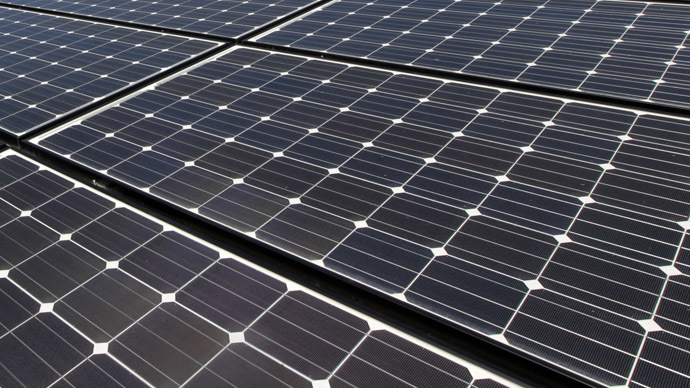Solar energy is becoming an increasingly popular alternative for powering various devices and systems. One innovative development in this field is the emergence of 3D printable solar panels. These panels offer a host of advantages and have the potential to revolutionize the way we harness and utilize solar power.
3D Printable Solar Panel: A Game-Changing Solution
 The concept of 3D printable solar panels is exciting for several reasons. Firstly, it allows for a more flexible and customizable approach to solar power generation. Traditional solar panels come in fixed shapes and sizes, which can be limiting in terms of installation options. In contrast, 3D printable solar panels can be designed and fabricated according to specific requirements, enabling greater flexibility in terms of placement and integration into various structures.
The concept of 3D printable solar panels is exciting for several reasons. Firstly, it allows for a more flexible and customizable approach to solar power generation. Traditional solar panels come in fixed shapes and sizes, which can be limiting in terms of installation options. In contrast, 3D printable solar panels can be designed and fabricated according to specific requirements, enabling greater flexibility in terms of placement and integration into various structures.
Moreover, 3D printable solar panels offer a cost-effective solution. By utilizing 3D printing technology, the production process becomes more efficient and less expensive, potentially making solar energy more accessible to a wider range of consumers. This affordability factor is crucial in driving the adoption of renewable energy sources on a larger scale.
Printable Solar Panels for Different Applications
 The versatility of 3D printable solar panels extends to various applications. From portable solar chargers for smartphones and other gadgets to integrating solar cells into building designs, the possibilities are endless. Imagine having a solar-powered backpack that can charge your devices while you’re on the go or a solar-powered roof that generates electricity for your home.
The versatility of 3D printable solar panels extends to various applications. From portable solar chargers for smartphones and other gadgets to integrating solar cells into building designs, the possibilities are endless. Imagine having a solar-powered backpack that can charge your devices while you’re on the go or a solar-powered roof that generates electricity for your home.
Additionally, 3D printable solar panels hold promise for rural and remote areas without access to traditional power grids. These panels can be easily transported and set up, providing a reliable source of renewable energy to communities in need.
Environmental Benefits of Printable Solar Panels
 Investing in 3D printable solar panels is not only economically advantageous but also environmentally friendly. Solar energy is a renewable resource that does not produce harmful greenhouse gas emissions, unlike conventional energy sources such as coal or natural gas. By harnessing the power of the sun, we can significantly reduce our carbon footprint and contribute to a more sustainable future.
Investing in 3D printable solar panels is not only economically advantageous but also environmentally friendly. Solar energy is a renewable resource that does not produce harmful greenhouse gas emissions, unlike conventional energy sources such as coal or natural gas. By harnessing the power of the sun, we can significantly reduce our carbon footprint and contribute to a more sustainable future.
Furthermore, using printable solar panels can reduce the environmental impact associated with traditional manufacturing processes. By optimizing material usage and reducing waste through 3D printing, the overall energy and resource consumption can be minimized, resulting in a more eco-friendly production method.
The Future of Solar Power
 The development of 3D printable solar panels marks an exciting era in renewable energy. As technology continues to advance, we can expect further improvements in efficiency and affordability, making solar power more mainstream and accessible.
The development of 3D printable solar panels marks an exciting era in renewable energy. As technology continues to advance, we can expect further improvements in efficiency and affordability, making solar power more mainstream and accessible.
Imagine a future where every household has its own customized solar panels, generating clean and sustainable energy. This vision is not far-fetched, thanks to the possibilities offered by 3D printable solar panels. With continuous innovation and investment in renewable energy solutions, we can pave the way towards a greener and more sustainable world.
In conclusion, 3D printable solar panels are a game-changer in the field of solar energy. Their flexibility, cost-effectiveness, and environmental benefits make them a promising alternative to traditional solar panels. With their wide range of applications and potential for customization, these panels are set to transform the way we harness and utilize solar power. As we continue to advance in technology and increase the adoption of renewable energy sources, printable solar panels hold immense potential for a brighter and greener future.